Deubiquitinating Enzyme USP9X Suppresses Tumor Growth via LATS Kinase and Core Components of the Hippo Pathway
- PMID: 28720576
- PMCID: PMC6047736
- DOI: 10.1158/0008-5472.CAN-16-3413
Deubiquitinating Enzyme USP9X Suppresses Tumor Growth via LATS Kinase and Core Components of the Hippo Pathway
Abstract
The core LATS kinases of the Hippo tumor suppressor pathway phosphorylate and inhibit the downstream transcriptional co-activators YAP and TAZ, which are implicated in various cancers. Recent studies have identified various E3 ubiquitin ligases that negatively regulate the Hippo pathway via ubiquitination, yet few deubiquitinating enzymes (DUB) have been implicated. In this study, we report the DUB USP9X is an important regulator of the core kinases of this pathway. USP9X interacted strongly with LATS kinase and to a lesser extent with WW45, KIBRA, and Angiomotin, and LATS co-migrated exclusively with USP9X during gel filtration chromatography analysis. Knockdown of USP9X significantly downregulated and destabilized LATS and resulted in enhanced nuclear translocation of YAP and TAZ, accompanied with activation of their target genes. In the absence of USP9X, cells exhibited an epithelial-to-mesenchymal transition phenotype, acquired anchorage-independent growth in soft agar, and led to enlarged, disorganized, three-dimensional acini. YAP/TAZ target gene activation in response to USP9X knockdown was suppressed by knockdown of YAP, TAZ, and TEAD2. Deletion of USP9X in mouse embryonic fibroblasts resulted in significant downregulation of LATS. Furthermore, USP9X protein expression correlated positively with LATS but negatively with YAP/TAZ in pancreatic cancer tissues as well as pancreatic and breast cancer cell lines. Overall, these results strongly indicate that USP9X potentiates LATS kinase to suppress tumor growth. Cancer Res; 77(18); 4921-33. ©2017 AACR.
©2017 American Association for Cancer Research.
Figures
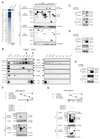
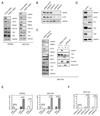
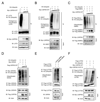
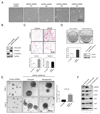

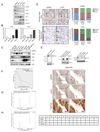
Similar articles
-
Role of Angiomotin-like 2 mono-ubiquitination on YAP inhibition.EMBO Rep. 2016 Jan;17(1):64-78. doi: 10.15252/embr.201540809. Epub 2015 Nov 23. EMBO Rep. 2016. PMID: 26598551 Free PMC article.
-
Angiomotins stimulate LATS kinase autophosphorylation and act as scaffolds that promote Hippo signaling.J Biol Chem. 2018 Nov 23;293(47):18230-18241. doi: 10.1074/jbc.RA118.004187. Epub 2018 Sep 28. J Biol Chem. 2018. PMID: 30266805 Free PMC article.
-
Serum deprivation inhibits the transcriptional co-activator YAP and cell growth via phosphorylation of the 130-kDa isoform of Angiomotin by the LATS1/2 protein kinases.Proc Natl Acad Sci U S A. 2013 Oct 22;110(43):17368-73. doi: 10.1073/pnas.1308236110. Epub 2013 Oct 7. Proc Natl Acad Sci U S A. 2013. PMID: 24101513 Free PMC article.
-
Non-hippo kinases: indispensable roles in YAP/TAZ signaling and implications in cancer therapy.Mol Biol Rep. 2023 May;50(5):4565-4578. doi: 10.1007/s11033-023-08329-0. Epub 2023 Mar 6. Mol Biol Rep. 2023. PMID: 36877351 Review.
-
Angiomotin'g YAP into the nucleus for cell proliferation and cancer development.Sci Signal. 2013 Sep 3;6(291):pe27. doi: 10.1126/scisignal.2004573. Sci Signal. 2013. PMID: 24003252 Review.
Cited by
-
The emerging role for Cullin 4 family of E3 ligases in tumorigenesis.Biochim Biophys Acta Rev Cancer. 2019 Jan;1871(1):138-159. doi: 10.1016/j.bbcan.2018.11.007. Epub 2018 Dec 30. Biochim Biophys Acta Rev Cancer. 2019. PMID: 30602127 Free PMC article. Review.
-
Deubiquitinase JOSD2 stabilizes YAP/TAZ to promote cholangiocarcinoma progression.Acta Pharm Sin B. 2021 Dec;11(12):4008-4019. doi: 10.1016/j.apsb.2021.04.003. Epub 2021 Jun 25. Acta Pharm Sin B. 2021. PMID: 35024322 Free PMC article.
-
Downregulation of USP9X in the DG Region of the Hippocampus Leads to AD-Like Cognitive Dysfunction in Mice.CNS Neurosci Ther. 2025 Jul;31(7):e70493. doi: 10.1111/cns.70493. CNS Neurosci Ther. 2025. PMID: 40586131 Free PMC article.
-
Silibinin inhibits the migration, invasion and epithelial-mesenchymal transition of prostate cancer by activating the autophagic degradation of YAP.J Cancer. 2022 Sep 25;13(13):3415-3426. doi: 10.7150/jca.63514. eCollection 2022. J Cancer. 2022. PMID: 36313039 Free PMC article.
-
Hippo/TEAD4 signaling pathway as a potential target for the treatment of breast cancer.Oncol Lett. 2021 Apr;21(4):313. doi: 10.3892/ol.2021.12574. Epub 2021 Feb 23. Oncol Lett. 2021. PMID: 33692845 Free PMC article. Review.
References
-
- Harvey K, Tapon N. The Salvador-Warts-Hippo pathway - an emerging tumour-suppressor network. Nature reviews Cancer. 2007;7:182–91. - PubMed
-
- Pan D. Hippo signaling in organ size control. Genes Dev. 2007;21:886–97. - PubMed
-
- Saucedo LJ, Edgar BA. Filling out the Hippo pathway. Nat Rev Mol Cell Biol. 2007;8:613–21. - PubMed
-
- Harvey KF, Zhang X, Thomas DM. The Hippo pathway and human cancer. Nat Rev Cancer. 2013;13:246–57. - PubMed
MeSH terms
Substances
Grants and funding
LinkOut - more resources
Full Text Sources
Other Literature Sources
Medical
Research Materials

